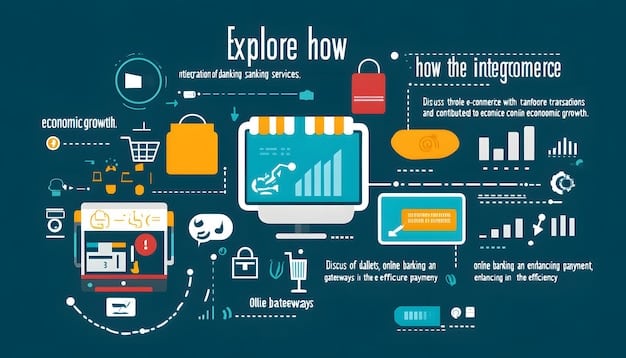E-commerce Platform Internationalization: Your Guide to Global Markets from the US

E-commerce Platform Internationalization is the process of adapting your online store to cater to international markets, enabling you to expand your reach to global markets from the US and increase revenue.
Expanding your e-commerce business beyond the US borders can unlock significant growth opportunities. But entering new markets requires careful planning and the right technology. E-commerce Platform Internationalization is crucial for businesses looking to expand your reach to global markets from the US. Is your platform ready to handle multilingual content, diverse payment methods, and varying shipping regulations?
Understanding E-commerce Platform Internationalization
E-commerce Platform Internationalization is more than just translating your website. It involves a comprehensive strategy to adapt your online store to the specific needs and preferences of different international markets. This ensures a seamless and localized shopping experience for global customers, allowing you to expand your reach to global markets from the US.
Key Aspects of E-commerce Internationalization
Successfully navigating e-commerce platform internationalization requires attention to several critical areas. These elements work together to create a cohesive and effective global strategy. By addressing each point comprehensively, businesses can enhance their potential for successful international expansion.
- Language and Localization: Adapting your site’s language, currency, and content to resonate with local consumers.
- Payment Gateways: Integrating payment options preferred in different regions to facilitate transactions.
- Shipping and Logistics: Streamlining international shipping processes to ensure timely and cost-effective delivery.
- Legal and Regulatory Compliance: Adhering to local laws and regulations concerning data privacy, consumer protection, and import/export.

Effective E-commerce Platform Internationalization involves comprehensive market research to understand cultural nuances, consumer behaviors, and competitive landscapes. Businesses also need robust technology to manage multiple languages, currencies, and tax regulations efficiently. By optimizing these key areas, companies can achieve a competitive edge and grow profitability in global markets when looking to expand your reach to global markets from the US.
Choosing the Right E-commerce Platform for International Expansion
Selecting the right e-commerce platform is a critical decision for businesses aiming to expand your reach to global markets from the US. The platform should not only support multiple languages and currencies but also offer robust features for managing international shipping, taxes, and compliance with local regulations.
Top E-commerce Platforms for International Sales
Several e-commerce platforms are well-suited for international expansion. Each offers unique features and capabilities to support global sales. By carefully evaluating these options, businesses can select the platform that best aligns with their international growth strategy.
- Shopify: Known for its user-friendly interface and extensive app store, Shopify supports multiple languages, currencies, and international shipping options.
- Magento (Adobe Commerce): A highly customizable platform that offers advanced features for managing complex international operations.
- WooCommerce: A flexible and cost-effective option for businesses already using WordPress, with numerous plugins for international e-commerce.
- BigCommerce: Provides a comprehensive suite of tools for international selling, including multi-currency pricing, global SEO, and localized content.
When evaluating platforms for E-commerce Platform Internationalization, consider factors such as scalability, ease of integration with third-party services, and the availability of local support. A well-chosen platform can streamline international operations and enhance the customer experience, which allows you to effectively expand your reach to global markets from the US.
Strategies for Successful E-commerce Platform Internationalization
Successful E-commerce Platform Internationalization requires a well-defined strategy that addresses various aspects of global sales. This involves a deep understanding of target markets, effective localization, and efficient operational processes. By implementing these strategies, businesses can maximize their potential for global success and expand your reach to global markets from the US.

Key Strategies for Global E-commerce
To effectively expand internationally, businesses must adopt several key strategies that ensure a seamless and localized shopping experience for global customers. These strategies focus on understanding market nuances, providing personalized content, and optimizing the supply chain.
- Conduct thorough market research: Understand the cultural, economic, and regulatory landscape of your target markets.
- Localize your website and content: Translate your website, product descriptions, and marketing materials into the local language.
- Offer local payment options: Integrate payment gateways that are popular in your target markets to facilitate transactions.
- Optimize your website for local search engines: Use local keywords and SEO techniques to improve your visibility in search results.
- Provide excellent customer support: Offer customer service in the local language and address customer inquiries promptly.
When initiating E-commerce Platform Internationalization, businesses must also prioritize data security and compliance with international regulations, such as GDPR. Compliance ensures that you will expand your reach to global markets from the US with trust.
Overcoming Challenges in E-commerce Internationalization
While E-commerce Platform Internationalization offers significant opportunities, businesses often encounter various challenges that can hinder their global expansion efforts. Overcoming these challenges requires careful planning, adaptability, and a proactive approach to problem-solving. By addressing potential obstacles, companies can mitigate risks and improve their chances of successful entry into new markets when attempting to expand your reach to global markets from the US.
Common Challenges in Global E-commerce
Businesses face several common challenges when expanding their e-commerce operations internationally. These challenges span various areas, including logistics, cultural differences, and regulatory compliance. Recognizing and addressing these issues is crucial for effective global expansion.
- Logistics and shipping complexities: Managing international shipping, customs, and duties can be complex and costly.
- Cultural and language barriers: Communicating effectively with customers in different languages and cultures requires careful localization.
- Payment processing challenges: Integrating payment options that are popular in different regions can be technically challenging.
- Legal and regulatory compliance: Adhering to local laws and regulations concerning data privacy, consumer protection, and import/export can be difficult.
- Competition from local players: Competing with established local e-commerce businesses requires a strong understanding of the local market.
Addressing these challenges often involves partnering with local experts, investing in advanced technology, and adopting a flexible approach to business operations. E-commerce Platform Internationalization is only achieved by those who can face global adversity when working towards your goal to expand your reach to global markets from the US.
Measuring Success in E-commerce Platform Internationalization
Measuring success in E-commerce Platform Internationalization is essential for evaluating the effectiveness of your global expansion strategy. By tracking key performance indicators (KPIs), businesses can gain insights into their performance in different international markets and identify areas for improvement when trying to expand your reach to global markets from the US.
Key Performance Indicators for Global E-commerce
Tracking specific KPIs can help businesses assess the success of their international e-commerce efforts. These metrics provide valuable insights into customer behavior, sales performance, and operational efficiency.
- Website traffic from international markets: Monitoring website traffic from different countries can indicate the effectiveness of your international marketing efforts.
- Conversion rates in international markets: Tracking conversion rates in different countries can help you optimize your website and marketing campaigns for local customers.
- Average order value (AOV) in international markets: Monitoring AOV in different countries can help you understand customer spending habits and adjust your pricing strategy accordingly.
- Customer satisfaction scores in international markets: Tracking customer satisfaction scores in different countries can help you identify areas where you can improve the customer experience.
- Return on investment (ROI) of international marketing campaigns: Measuring the ROI of your international marketing campaigns can help you optimize your marketing spend and improve your overall profitability.
By regularly monitoring these KPIs, businesses can make data-driven decisions to optimize their international e-commerce operations and achieve their global growth objectives. This will further solidify the path to E-commerce Platform Internationalization and expand your reach to global markets from the US.
| Key Point | Brief Description |
|---|---|
| 🌍 Market Research | Understand local cultures and economies. |
| 💰 Payment Gateways | Integrate local payment methods. |
| 📦 Logistics | Streamline international shipping. |
| ✅ Compliance | Adhere to local laws and regulations. |
Frequently Asked Questions
E-commerce Platform Internationalization involves adapting your online store to cater to the specific needs and preferences of international markets, ensuring a seamless shopping experience worldwide.
Internationalization allows e-commerce businesses to expand their reach to new markets, increase revenue, and diversify their customer base, reducing reliance on a single market.
Select a platform that supports multiple languages, currencies, and payment options, and offers robust features for managing international shipping and compliance, essential to expand your reach to global markets from the US.
Key strategies include conducting thorough market research, localizing your website and content, offering local payment options, and providing excellent customer support in local languages.
Common challenges include logistics complexities, cultural barriers, payment processing issues, and legal compliance. Addressing these is key when looking to expand your reach to global markets from the US.
Conclusion
E-commerce Platform Internationalization is a strategic imperative for businesses seeking to expand your reach to global markets from the US. By carefully planning and implementing the right strategies, businesses can unlock significant growth opportunities and thrive in the global marketplace.





